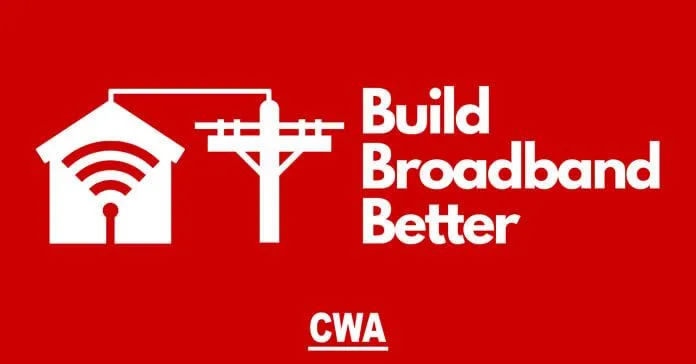CWA Activists Continue to Fight for Equitable Broadband Access and Good Jobs

Thanks to the leadership and the activism of CWAers, the $65 billion allocated in the recently passed Infrastructure Investment and Jobs Act to expand our nation’s broadband networks will help states across the country bring their telecommunications infrastructure into the 21st century and create new jobs in the process. Since the passage of the bill, the CWA Broadband Brigade and local activists have been mobilizing to ensure states eligible to receive federal funding Build Broadband Better by creating good union jobs and prioritizing closing the digital divide.
In New York, Nick Hoh, a telecommunications worker who serves as the Political Coordinator for CWA Local 1104 and is a member of CWA's Build Broadband Better team, labeled the $65 billion in federal broadband funding “a game changer for the nine million New Yorkers who currently lack an affordable, 21st-century internet connection” and called on New York lawmakers to “go further” to ensure an equitable broadband buildout by a well trained union workforce in a recent op-ed published by the Times Union.
In New Mexico, Stacy Watashe, Executive Vice President of CWA Local 7011 and a former Lumen Technologies employee, published an op-ed in the Albuquerque Journal where he noted that the federal funding to expand broadband access “could not have come at a more critical time for New Mexicans.” He pointed out that the longstanding disparities in broadband access for poor, rural, and tribal communities in New Mexico are in part the result of Internet Service Providers’ failure to invest in essential fiber-optic buildout in areas where they do not expect to turn a high profit, and called on New Mexico’s regulators to ensure the equitable distribution of federal broadband funds throughout the state. “No American should be left behind or limited to less reliable wireless connections because of their income or where they live, and our state regulators have a responsibility to prioritize these areas and use federal broadband funding to close this gap,” he wrote.
CWA Frontier Lineman Fights for Survival After Shooting


